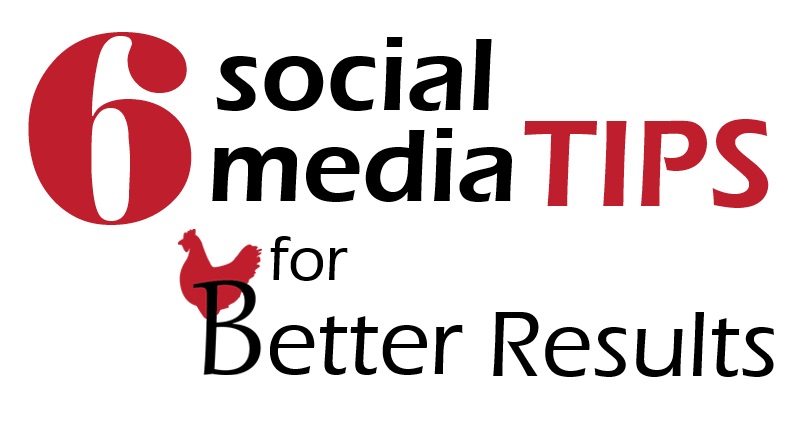In a recent webinar with CUcontent, I presented “Supercharged Strategies for Getting the Biggest Bang for your Marketing Dollar,” discussing how credit unions can bring focus (and better results) to their marketing departments next year.
I could have talked in-depth about social media and shared best practices I learned as a CU Digital Marketing Specialist. I could have talked about content marketing that converts readers. And I did touch on those briefly, near the end.
But the point I wanted to make to the CU audience is that better marketing isn’t the result of an effective social media silo. It’s the result of a solid strategy that takes an integrated approach to multi-channel marketing and measuring. The marketers who succeed won’t worry about managing content for a bunch of channels, because they’ll be focused on managing a seamless experience across channels.
With that in mind, here are my Social Media Tips from the webinar that can be applied across channels for a more consistent experience that leads to better results.
Be Visual.
Social platforms are being redesigned and new ones are springing up around visual content. Facebook posts with images, for example, get twice the engagement of text-only posts.
But it’s not just about posting pretty pictures; visual brand design is maturing, so smart brands are looking cohesively at the whole Facebook page, from the cover photo to the profile thumbnail, for consistent visual branding. Then, they’re looking from the Facebook page to the Twitter background to the LinkedIn header to echo the visual brand. Target and Coca-Cola both excel at this.
The best brands aim for consistent visual branding across traditional channels, too, from direct mail to brick-and-mortar decor. For example, my inaugural Digital Marketing Strategy for Firefighters Community Credit Union defined the brand voice and personality so succinctly that it also guided our approach to recording radio ads and renovating the main branch.
Be Engaging.
Social media is about being social, but if you’re waiting for engagement to happen, you’re forgetting that it’s a two-part process. Start by actively initiating. The simplest way to do that is just tagging other companies on Facebook or LinkedIn as a way of mentioning local business partners or vendors to encourage shares and likes. On Twitter, a @mention (done the right way) can engage companies and members and encourage retweets.
Another way we actively engaged with members at FFCCU, even before they started engaging with us on social media, was by sharing interactions from other channels. As one way of literally pulling members from traditional channels into social media, we simply posted about those interactions on Facebook. So, for example, when they brought in cupcakes or other holiday goodies, we snapped a picture and shared it on Facebook to thank “Member Brooke B.” for brightening our day. When someone emailed a manager to commend a rep for great service, we’d post a snippet of feedback on Facebook to say thanks – but also, to leverage the recommendation beyond a private inbox.
The more actively engaging your brand is on social media, the more people will want to engage. Of course, you have to make it easy for them…
Provide Ways to Engage.
Sometimes, it’s as simple as asking for engagement through a like, share, or comment. In fact, retweets are 4x more likely when tweets include the basic request: “Please Retweet.”
But too much of that can seem spammy, so get clever about opening conversations online. For example, fill-in-the-blank posts on Facebook generate ____ more engagement than the average statement. (It’s 90% more, but didn’t that blank space make you keep reading to find out?) Also try true/false or multiple choice questions, which Zillow does very well.
Keep in mind that whatever you’re asking fans to give must be commensurate for what they get. Some superfans may click ‘like’ for no reward other than the social satisfaction of sharing approval, but incentives and empowerment go a long way to activate others. For example, at FFCCU, we asked fans to share their favorite cheap date idea for a chance to win dinner for two. With food on the line, fans offered ideas that sparked engagement across channels and provided us with member-created content for a frugal Valentine’s Day blog post.
Be Brief.
Twitter has the built-in limit of 140 characters for a reason. On other channels, restrain yourself similarly. Remember that Facebook posts of 80 characters or less receive 27% higher engagement, and keep it brief.
Be Timely.
We talk about relevant content in terms of being valuable to consumer needs, but there’s a lot of noise out there that’s broadly relevant. The content that gets noticed has hooks to make it relevant in terms of being timely. Facebook posts that mentioned Independence Day on July 4, for example, generated 90% more engagement than all other posts that day. To leverage content with a hook, look for current events, local news, or holidays you can piggyback on, even if it’s just Shark Week. And don’t forget the #hashtags!
Be Integrated.
Use your channels to cross-promote one another and Ping-pong fans from one platform to the next. Don’t just tweet that people should like your Facebook page; share the link to a Facebook post on Twitter, leveraging content and encouraging participation across channels. Or, share the link to a pin as a Facebook post, and invite Facebook fans to follow you on Pinterest for more. Continue closing the loop by pointing members toward valuable content, so when you’re ready to point them toward your value-add services, they’re hooked.
>> Need help generating a buzz around your brand? Wonder how a few likes can turn into even more likes on your social sites? Contact Bantamedia today to pump up your brand presence with content, PR, and SEO services. >>

